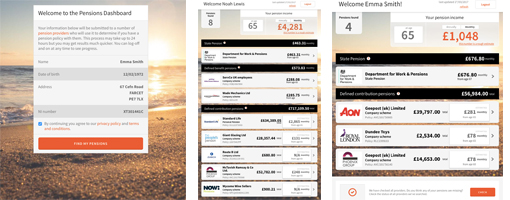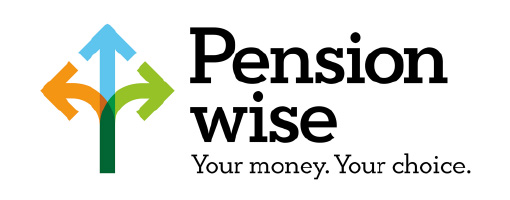The Pensions Dashboards Programme’s (PDP) newly released timeline for the dashboards' development has been met with a mixture of disappointment and understanding from the pensions industry.
Aegon head of pensions, Kate Smith, said that although the pushing back of the timetable by four years was “disappointing”, the delay was due to the “extremely complex but worthwhile challenge” of implementing dashboards.
She added that it was important the extra time the industry had to prepare due to the delay was not wasted and the time was used to ensure that the staging process was short to “gain critical mass quickly”.
Smith warned: “Without this it runs the real risk that people will be put off using pensions dashboards.”
The People’s Pension director of policy, Phil Brown, said: “We welcome that we now have a clear timetable for when the dashboard project will go live. There is much work to do before millions of consumers are able to answer the simple question of ‘how much are my pensions worth and where are they?’ but this long anticipated announcement is a very important step in the right direction.”
Pensions and Lifetime Savings Association (PLSA) director of policy and research, Nigel Peaple, was also positive, stating that the “clear and reasonable project timeline” would help its members to have “the certainty they need to prepare for onboarding”.
He continued: “PLSA research suggests that most (75 per cent) pension schemes – both DC and DB – believe they will need up to two years to prepare for onboarding. The fact that mandatory onboarding will not begin until 2023 is a recognition of the significant challenges schemes and providers will face in preparing their data.”
Phoenix Group head of UK proposition, Neil Hugh, was similarly pleased about the “further clarity” outlined in the update, adding that he recognised “the efforts and enthusiasm of the team working on the project” though there was still “a great deal to be achieved”.
However, some industry members reacted negatively to news of the delay, raising concerns about what the slow progress of the dashboards might mean for members and the technological infrastructure of the project.
Royal London pension specialist, Helen Morrissey, said: “After already progressing at a snail’s pace for some time it is hugely disappointing to see this project further delayed. Of course, such projects are complex but the potential that dashboards have to help people take control of their retirement planning is huge and must be grasped. Every delay risks letting down a generation of savers.”
Smart Pension director of policy, Darren Philp, added: "While we understand the complexities involved in delivering dashboards, we would like to see the programme go quicker and believe that the saver shouldn’t have to wait until 2023 to have the beginnings of the dashboard.
“Technology is changing the way we think about pensions and the industry needs to develop and invest in the infrastructure that makes this stuff second nature."
The PDP also confirmed that phase one of the process, programme setup and planning, was underway, with the upcoming steps of this phase including agreeing the architecture of the dashboards, completing procurement for a supplier for the digital architecture and setting the first version of data standards, which is expected in December 2020.
Smith noted: “It's good news that the first set of data standards will be published in December allowing all pension schemes and providers enough time to get their data in order and be ready by 2023. There’s a great deal of work to be done between now and 2023, not only for the PDP, but also for all pension providers and schemes, fintech, the government and regulators.”
Tisa head of retirement, Renny Biggins, decided to look beyond the project as he argued that the industry “shouldn’t be pinning all our hopes on it” and should instead consider “other solutions to improve engagement now”.
He continued: “The introduction of the simpler annual statement is a good example of things we can do to make things easier for consumers to engage and understand what they are being sent. Small bitesize communications with consistency in our language are needed to give consumers some confidence.
“Let’s not wait for the dashboard and if it is to be delayed, we have the opportunity to improve our communications and make them meaningful, so when the dashboard does come along, we have a more engaged market which will increase the number of people who will use the dashboard.”
PensionBee head of corporate development, Clare Reilly, looked beyond the project too, arguing that its research indicated that “the main issue is not that a minority have lost their pensions, but that the majority of consumers cannot access important information about the pensions they know they have, such as balances, charges, performance and investments”.
She stated: “We believe that open pensions can create 50 times more value for consumers than a simple pension finder service, such as the pensions dashboards.”
Reilly concluded: “Open pensions is a distinct and urgently needed policy objective that will drive consumers to take advantage of more digital tools and prepare for and manage their retirements.
“It is therefore imperative that the pensions dashboards develop in parallel with open pensions, and must not be allowed to occur sequentially, as the result will be that consumers must wait until beyond 2030 to see basic data about their pensions, greatly undermining their trust in the pensions industry.”
Latest News
-
Average DB funding ratio reaches highest level in nearly two years as global tensions ease
-
Regulatory risk now second largest concern for UK pension schemes
-
Brunel LGPS partner funds confirm final pooling decisions
-
'Dramatic' shift in retirement behaviour following NHS pension reforms
-
CMCs shift focus from DB redress claims as redress continues to fall
-
Sweden’s Lumera wins first UK client
Private markets – a growing presence within UK DC
Laura Blows discusses the role of private market investment within DC schemes with Aviva Director of Investments, Maiyuresh Rajah
The DB pension landscape
Pensions Age speaks to BlackRock managing director and head of its DB relationship management team, Andrew Reid, about the DB pensions landscape
Podcast: Who matters most in pensions?

In the latest Pensions Age podcast, Francesca Fabrizi speaks to Capita Pension Solutions global practice leader & chief revenue officer, Stuart Heatley, about who matters most in pensions and how to best meet their needs
Podcast: A look at asset-backed securities

Royal London Asset Management head of ABS, Jeremy Deacon, chats about asset-backed securities (ABS) in our latest Pensions Age podcast
© 2019 Perspective Publishing Privacy & Cookies










Recent Stories